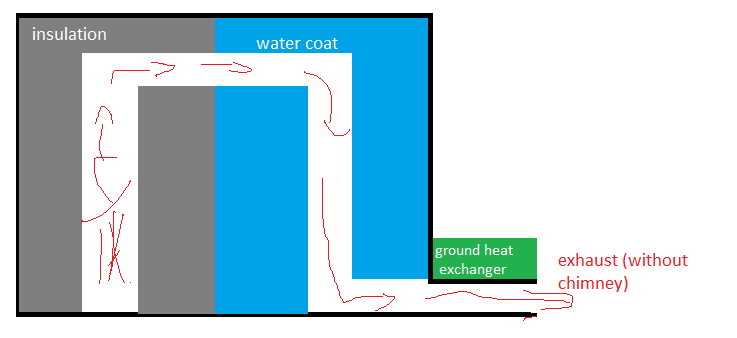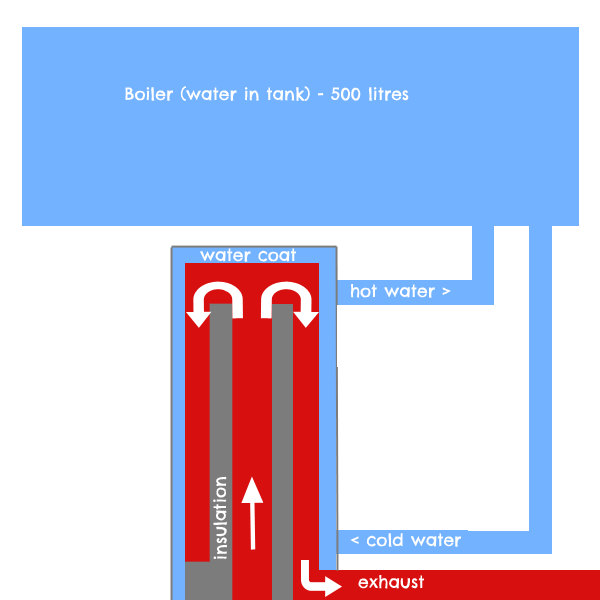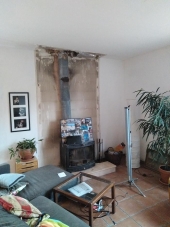posted 12 years ago
Marek Wojtaszek : Welcome to Permies, And a Big Welcome to the Rocket and Wood Heater Forums / Threads, With over 19,000 fellow members from all
around the world, you can generally come here 24 / 7 and talk to someone who wants to talk about what you want to talk about, many will have unique points
of view !
No, Fortunately I don't think that this could be made to work, If it could be made to work you would be exposing the water to temperatures in Excess of 1600F /
900-ish C . This could never be made a safe system due to the danger of water flashing to steam !
With a conventional Rocket Mass Heater the hot exhaust gases rise within the Heat Riser, Turbulent hot and isolated from the gas stream in the Barrel, When the
hot exhaust stream slams into the Barrel top, a very turbulent tumble of hot exhaust gases form a perfect Toroid or Doughnut shape of hot exhaust gases*, Here
the turbulence is modified ,with the reduction of turbulence we gain more heat energy and actually reduce the noise as we reduce the turbulence.
This affect has been long noted , but is very hard to describe, to allow for the transfer of this knowledge, and is very hard to collect the measurements to codify
what is happening here, It is however simple to build ,or tell a separate person how to build.
Describing the Transitional area just below that receives the Vertically Falling Hot Exhaust Gases, and channels them horizontally over the top of a large Ash pit
and past a clean out is even harder to describe well and as a result much problems in flow are proven to come from here, much more time is spent here than on
describing the Toroid, I am afraid that this is a very critical shape and your research was led astray by other people who never had the Toroid explained to them !
for the good of the Craft, I hope this helps
Think like fire, flow like a Gas, Don't be the Marshmallow! all comments /questions are solicited and welcome ! Pyro- logically Big AL
* your planned build looks much like a rocket from a side on view, you need to seek out a view of the R.M.H. from the top down, Consider going to our sister site
richsoil.com and click on Rocket stoves, this will take you through a series of R.m.h. Builds one by professionals, or reviewed by professionals ! A.L.
Late note : The original Creator of the R.M.H. spent years to find a location where the use of horizontal chimneys with No vertical chimneys was possible,
then he (Ianto Evans) build his homes in harmony with the terrain, as you probably are seeking to put a R.M.H. into an existing structure, the direction of prevailing
winds can render an R.M.H. with a horizontal chimney unusable for days at a time, In planning your build you should always plan-in a for vertical chimney rising a
Meterabove your highest point on your house !
Success has a Thousand Fathers , Failure is an Orphan
LOOK AT THE " SIMILAR THREADS " BELOW !






























 1
1




![Filename: HotWater.jpg
Description: Hot water with RMH [Thumbnail for HotWater.jpg]](/t/27583/a/10957/HotWater.jpg)





 2
2














































































